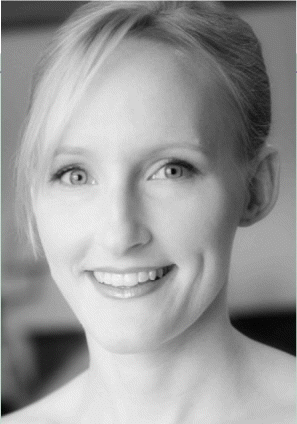Are there racial and ethnic disparities in patients with chronic rhinosinusitis presenting for sinus surgery? According to one recent study, the answer is yes. The nasal polyp population consists of a larger portion of nonwhite patients who tend to present with worse disease, and certain subgroups have worse quality-of-life scores.
However, variables such as education and income do not explain the differences, according to Jamie Litvack, MD, from the Oregon Health and Science University. At the Combined Otolaryngological Spring Meeting, she presented findings from a study investigating whether racial or ethnicity disparities exist in patients with chronic rhinosinusitis presenting for surgery.
The study was performed because few data describe racial or ethnic differences in the chronic rhinosinusitis population, she said. However, minorities represent 34% of the US population, and in some diseases there are known differences between different populations because of genetic differences, or even due to differing cultural practices such as dietary habits.
Racial and ethnic disparities have been documented across many aspects of health care, including the number of office visits, the number of procedures performed, and the intensity of inpatient care, she said. In the endoscopic sinus surgery population, minorities represent less than 15% of cases. She noted that African Americans make up 11% of the US population and 10.9% of patients with chronic rhinosinusitis, but only 5% of the sinus surgery population.
Study Structure
The aim of the study was to examine whether or not racial or ethnic disparities exist in patients with chronic rhinosinusitis presenting for sinus surgery. Researchers launched a prospective cohort study of 435 patients from three institutions who had a diagnosis of chronic rhinosinusitis, had failed medical management, and had elected to undergo sinus surgery. Race and ethnicity were identified by patients when asked, while physicians documented demographic data, diagnostic data, and comorbid conditions. CT scan, endoscopy exam, and quality-of-life scores were also collected. Researchers performed various analyses to determine relationships between factors such as race, geography, education, or sex and health measures.
The study group consisted of a total of 376 whites, 10 African Americans, 22 Asians, and eight people who fell into other categories (such as native American, Pacific Islander, or Persian). Ethnicity was broken down into only two groups, Hispanic-Latino (10 patients), and non-Hispanic-Latino (425 patients).
 We found significantly worse disease-specific quality of life in both our race and ethnicity analyses. And this was not accounted for by other potential variables.
We found significantly worse disease-specific quality of life in both our race and ethnicity analyses. And this was not accounted for by other potential variables.–Jamie Litvack, MD
Disparities Discovered
Researchers found that the demographic and clinical characteristics among the different groups were not statistically different with regard to age, gender, or education level. But there was a significant difference with regard to nasal polyposis, Dr. Litvack said.
Nasal polyps were more common in the nonwhite group than among whites, occurring in 59% of Asians, 42% of the African Americans, 63% of the other population, and only 37% of whites. The differences among the groups were statistically significant. Other conditions considered in the study included asthma, allergic rhinitis, prior surgeries, and smoking, but differences seen among the groups in these categories were not statistically significant.
Lund-Mackay CT scores and Lund-Kennedy endoscopy scores were both used to rate the severity of disease. The mean Lund-Mackay CT score was an average of two points higher (worse) in nonwhites than whites: In whites the score was 11.9, and in nonwhites it was 13.8. The difference was statistically significant. This was likely related to the more common presence of nasal polyposis, she said.
When it came to the Lund-Kennedy endoscopy scores, there were no differences in endoscopy scores across race groups, she said.
Researchers also used the Rhinosinusitis Disability Index, a disease-specific measure of quality of life. This was statistically worse in the nonwhite groups, across all three subscales [physical, functional, and emotional] and the total score, Dr. Litvack said. In contrast, there was no difference on the Chronic Sinusitis Survey for either subscale or total.
As for ethnicity, researchers focused on the small Hispanic-Latino portion of the study population. There were some significant differences seen, even though there were no differences in age, education, income, and clinical characteristics between them and the non-Hispanic-Latino patients. CT and endoscopy scores were not statistically different either. There was also no difference on the Chronic Sinusitis Survey with regard to either symptoms or medication use.
However, we found significantly worse disease-specific quality of life across all three subscales of the RSDI and the total score, she said.
In brief, the researchers saw a larger portion of nonwhite patients with nasal polyposis in the cohort. We also saw that nonwhite patients presented with worse disease severity on CT exam, although this is likely related to nasal polyposis. However, we found significantly worse disease-specific quality of life in both our race and ethnicity analyses. And this was not accounted for by other potential variables, Dr. Litvack said.
She noted that there were some limitations to the study, including the small number of some of the minority groups, and the limited breakdown by ethnicity. In addition, although the study design could show that disparities exist, it could not unravel the underlying causes.
Still, the reasons for differences and disparities require further study. In other areas of the medical literature, reduction of disparities has shown to improve some outcomes. And potentially with more information, we too may be able to affect outcomes, she said.
©2009 The Triological Society
Leave a Reply